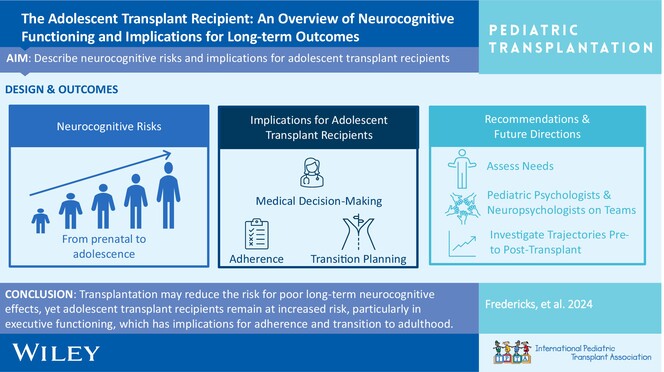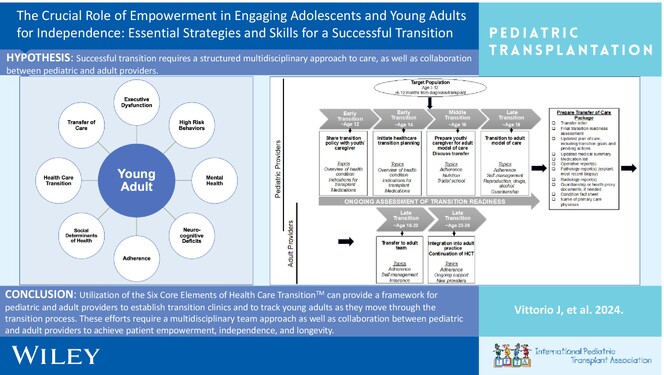Journal list menu
Export Citations
Download PDFs
Table of Contents
Adolescent and Young Adult Development in Transplant Recipients
- First Published: 06 October 2024
The Adolescent Transplant Recipient: An Overview of Neurocognitive Functioning and Implications for Long-Term Outcomes
- First Published: 16 August 2024

This paper provides an overview of neurocognitive functioning in youth with end-stage organ dysfunction with discussion of implications for adolescent transplant recipients. While neurocognitive functioning may improve post-transplantation, it is important to understand the trajectory of neurocognitive development starting in transplant candidacy to evaluate the implications of early deficits.
Applications of motivational interviewing in adolescent solid organ transplant
- First Published: 04 March 2024
Educational Needs of the Adolescent Transplant Recipient: A Developmental Approach to Understanding Transplant
- First Published: 19 June 2024
Social Media and the Adolescent Transplant Recipient
- First Published: 10 December 2024
Addressing Substance Use in the Adolescent Transplant Population
- First Published: 24 June 2024
Sexual and reproductive health screening and counseling in adolescent and young adult transplant recipients
- First Published: 02 April 2024
Supporting Transgender, Nonbinary, and Gender Diverse Youth During Solid Organ Transplantation
- First Published: 02 December 2024
Pregnancy after transplant in the older adolescent: Anticipatory guidance for the pediatric provider
- First Published: 29 April 2024

This manuscript will provide a brief review of current recommendations for contraception for adolescent and young adult solid organ transplant recipients, a short review of immunosuppression and pregnancy exposure, overview of outcomes in recipients who had a pregnancy before age 21 years, and pregnancy outcomes in the general transplant population.
Adult and late adolescent complications of pediatric solid organ transplantation
- First Published: 29 April 2024
The Crucial Role of Empowerment in Engaging Adolescents and Young Adults for Independence: Essential Strategies and Skills for a Successful Transition
- First Published: 26 July 2024

Presented here is a structured approach to healthcare transition for adolescent and young adult SOT recipients aimed at optimizing independence in order to assist young patients with adherence, self-management, and improved quality of life. These efforts require a multidisciplinary team approach as well as collaboration between pediatric and adult providers.
Kidney adolescent and young adult clinic: A transition model in Africa
- First Published: 04 March 2024
Bridging the Gap: A Review of Pediatric to Adult Transition of Care in Liver Transplantation
- First Published: 06 December 2024





